
The flag of the Philippines was officially hoisted for the first time on 12th of June 1898 and, after minor changes in the shape of the white triangle and the sun in its centre, displayed the current design from 1936. It shows two horizontal stripes in blue and red with an isosceles white triangle on the leech. Within the triangle is situated a golden sun with eight beams surrounded by three golden five-pointed stars. The designing elements of the flag of the Philippines are broadly of Masonic origin. So the sun-emblem and also the isosceles triangle. The colour red stands for courage, bravery, chivalry and determination, blue stands for idealism and patriotism and white for purity and peace. The sun embodys the freedom and represents that eight provinces from where the freedom-movement started. The three stars stand for the three main parts of the country: the both islands Luzon and Mindanao and the Visayan Archipelago. In a state of war, the flag is officially, i.e. by decree, hoisted upside down so that the red stripe is visible at the top. The last time this was done was between 1936 and 1945. The colours of the flag of the Philippines were last fixed in the Republic Act No. 8491 of 1998, it seems, at: Blue = Pantone 286, Red = Pantone 193 and Yellow = Pantone 122. They were first set in 1955, but to "dark blue" and "crimson red". Over the years, the shade of blue has been changed quite often, for example from 1985 to light blue, from 1986 again to dark blue and since 1998 one could speak of "medium blue". Due to the frequent changes, which always take time to become established in practice, there will have been confusion again and again, so that to this day there are still quite sub-directed specifications. What is certain is that the blue in the national flag is the same as the blue in the presidential flag. This conclusion can be drawn from photos showing both flags. The flag of the Philippines has its roots in the anti-Spanish freedom-movement and goes indirectly back to the flag of the in the year 1892 established "Katipunan" Movement. That showed first of all one, later three white "K" on red ground. In the year 1896 the letters were removed and substituted by the portrayal of a white sun with eight beams with a face. After various variants was hoisted on the 12th of June in 1898 – the day of the first declaration of the independence – the today’s flag. Under the US-American colonial rule the flag was prohibited between 1907 and 1917 (by other sources to 1920). The on 24t of March in 1934 proclaimed Philippine Commonwealth took the flag officially over on the 14th of May in 1935. The since 1941 invading Japanese interdicted the use of the flag as well, but only until the 14th of October in 1943 as Japan dismissed the Philippines into a kind of independence. As the Philippines were dismissed into independence by the USA on 4th of July in 1946 this flag became tooken over for the Republic of the Philippines. The flag of the president of the Philippines is in its design orientated in the flag of the president of the USA. It shows a single-coloured blue bunting with a circle of many white stars and in it a golden sun with eight beams. The sun is covered by a red triangle which shows a golden sea-lion and three golden stars. The many white stars should represent the 75 provinces of the republic but their number on the flag correlates not with their real number.
Source:
Flaggen Wappen Hymnen,
Flaggen und Coat of arms of the Welt,
Die Welt der Flaggen,
Wikipedia (EN),
getrealphilippines.com

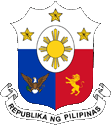
since 1998,
Coat of arms of the Philippines,
Source, by: Wikipedia (ES),
officialgazette.gov.ph file: evolutionofPHLflag

1905–1935,
Coat of arms of the Philippines,
Source, by: Wikipedia (ES),
officialgazette.gov.ph file: evolutionofPHLflag

1935–1946,
Coat of arms of the Philippines,
Source, by: Wikipedia (ES),
officialgazette.gov.ph file: evolutionofPHLflag
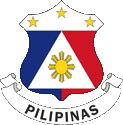
1943–1945,
Coat of arms of the Philippines,
Source, by: Wikipedia (ES),
officialgazette.gov.ph file: evolutionofPHLflag
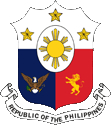
1946–1978,
Coat of arms of the Philippines,
Source, by: Wikipedia (ES),
officialgazette.gov.ph file: evolutionofPHLflag
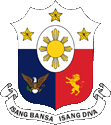
1978–1985,
Coat of arms of the Philippines,
Source, by: Wikipedia (ES),
officialgazette.gov.ph file: evolutionofPHLflag
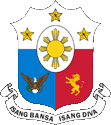
1985–1986,
Coat of arms of the Philippines,
Source, by: Wikipedia (ES),
officialgazette.gov.ph file: evolutionofPHLflag

1986–1998,
Coat of arms of the Philippines,
Source, by: Wikipedia (ES),
officialgazette.gov.ph file: evolutionofPHLflag

The today’s coat of arms of the state was introduced on 4th of July in 1946 on the occasion of the independence. The basic colours the sun and the stars were taken from the flag. The lion remembers the Spanish (1596–1898) and the eagle with the three arrows in the claws the US-American rule (1898–1942 and 1945–1946). The sun in the middle symbolizes the independence of the country. The coat of arms is underneath added by a white banner. Initially it carryed the name of the country as English inscription "Republic of the Philippines" which was substituted in 1981 by the Tagalog language inscription "Isang Bansa Isang Diva" (One nation one spirit). After the end of the presidial dictatorship of Ferdinand Marcos the name of the country was inserted again into the banner in 1987 but now in Tagalog language: "Republika ng Pilipinas". A very important element of the heraldry of the Philippines is the so-called sea lion, a hybrid of a lion and a dolphin, holding a sword in its hand. This symbol was awarded to the City of Manila in 1596 and probably goes back to the General Capitanate of the Philippines, founded in 1565, which was subordinated to the Viceroyalty of New Spain and existed until 1898. The coat of arms of the General Capitanate showed the sea lion in green and with a golden crown on a golden shield. Already in 1998, a modified coat of arms was introduced that does away with the US eagle and the Spanish lion because they present the colonial past, but this coat of arms has not yet been officially confirmed.
Source:
Flaggen Wappen Hymnen,
Flaggen und Coat of arms of the Welt,
Die Welt der Flaggen,
Wikipedia (EN),
Volker Preuß


Aircraft Roundel,
Source, by: Wikipedia (EN)

1936–1942, 1945–1947,
Aircraft Roundel,
Source, by: Wikipedia (EN)

Location:
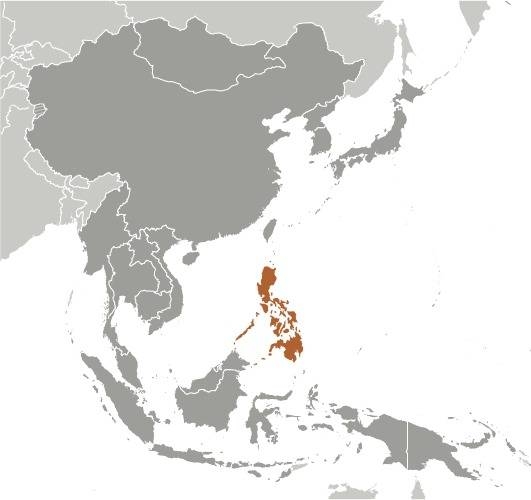
Source: CIA World Factbook
Map of the country:
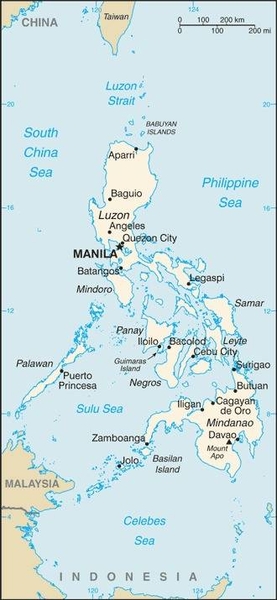
Source: CIA World Factbook

Area: ca. 115.800 square miles
Inhabitants: 109.035.343 (2020), thereof 24.4% Tagalog, 11.4% Bisaya/Binisaya, 9.9% Cebuano, 8.8% Ilocano, 8.4% Hiligaynon/Ilonggo, 6.8% Bikol/Bicol, 4% Waray, 1,5% Chinese, ca. 23% of other local ethnicity, further 300.000 US-Americans, also Indians, Arabs and Japanese
Religions: 80% Roman Catholic, 6% Muslim, 2,5% Protestant
Density of Population: 941 inh./sq.mi.
Capital: Manila, 1.780.148 inh. (2015)
official Languages: Filipino (or Pilipino), English
other Languages: Tagalog, Cebuano, Spanish
Currency: 1 Peso Filipino (PHP) = 100 Centavos
Time Zone: GMT + 8 h
Source:
Wikipedia (DE),
Wikipedia (EN),
CIA World Factbook

14th/15th cent. · the Sulu Archipelago and Mindanao Island belong to the Indonesian Empire of Majapahit
15th/16th cent. · nascence of local monarchies on Cebu Island, Luzon Island and the Sulu Archipelago, islamization
1521 · discovery by the in orders of Spain sailing Portugese seafarer Fernão de Magalhães (At this occasion he circumnavigated the world sphere for the first time)
1526/1527 · research of Mindanao Island by an expedition of the Spaniard Loaisa
1542/1543 · the Spanish seafarer López de Villalobos reaches the islands and names them by Philipp II. the successor of the Spanisch king Charles V.
1565 · foundation of the General Capitanate of the Philippines (subordinated to the Viceroyalty of New Spain), onset of the conquest and colonization by Spain
1571 · foundation of Manila
1588 · Anti-Spanish revolt in and around Manila
1744–1830 · after a rebellion effective independence for Bohol Island
1762 · conquest and occupation of Manila by the British
1764 · withdrawal of the British
1872 · Anti-Spanish Cavite Revolt
1892 · foundation of the freedom movement "Katipunan"
21st of April to 10th of December 1898 · Spanish-American War (1st of May 1898: victory of the USA in the sea-battle in the Manila Bay, 12th of June 1898: the Philippines proclaim the independence, June 1898: conquest of Puerto Rico by US-American troops, 3rd of July 1898: victory of the USA in the sea-battle of Santiago de Cuba, 13th of August 1898: US troops occupy Manila, 14th of August 1898: surrender of the Spanish troops on the Philippines)
10th of December 1898 · Peace of Paris, Spain cedes the Philippines, Cuba, Puerto Rico and Guam to the USA
1916 · the USA grant the Philippines a limited autonomy
24th of March 1934 · extended autonomy in the framework of a "Commonwealth"
10th of December 1941 · onset of the occupation by Japanese troops
May 1942 · the whole Philippines are under Japanese control, granting of limited autonomy under Japanese supremacy
14th of October 1943 · Japan grants the Philippines "independence", status of a satellite state
20th of October 1944 · debarkation of US-American troops, start of the re-conquest and re-colonization by the USA
4th of July 1946 · proclamation of independence, the USA secure themselves long-lasting military, political and economic influence by leasing of 23 military bases for 99 years (until 2045)
30th of August 1951 · military pact with the USA
1954 · the Philippines are a founder member of the SEATO
1955 · Laurel-Langley-Agreement, the USA get privileges on the Philippines
1959 · the USA reduce the number of their military bases to seven and reduce the duration of the leasing to 25 years (until 1971)
1965 · Ferdinand Marcos becomes president
1972–1986 · presidial dictatorship ("New Companionship") of Ferdinand Marcos
1966 · the Philippines send 2000 soldiers to Vietnam
1977 · dissolution of the SEATO
1986 · activities of the islamic NMLF rebel group in the south of the country (NMLF = National Moro Liberation Front)
1996 · armistice between government and NMLF, a splinter group – the MILF – continues the struggle (MILF = Moro Islamic Liberation Front)
1997 · armistice between government and MILF, a splinter group - the "Abu-Sayyaf" – continues the struggle
2000 · potent activities of the islamic Abu-Sayyaf rebel group in the south of the country, assault of governmental troops at the headquarter if the MILF, smash of the Abu-Sayyaf Group
Source:
Atlas zur Geschichte,
Weltgeschichte,
Wikipedia (DE),
World Statesmen,
Volker Preuß

When Magalhães discovered the today’s Philippines he gave them the name "Archipelago of Saint Lazarus", probably because he spoted on 16th of March in 1521 – the day of the Saint Lazarus – Samar Island which belongs to that Archipelago. In the year 1542 López de Villalobos named the islands to honor Philipp II. the successor of the Spanish king and Roman-German emperor Charles V.
Source: Handbuch der geographischen Namen, Wikipedia (DE)

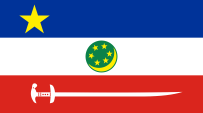
Flag of the ARMM
ratio = 5:9,
Source: Wikipedia (EN)



The ARMM was established in 2008 and enlarged in 2012, hoping to reduce the terror of Islamic Moros by making concessions to autonomy. The ARMM covers 10.415 sq.m., in the regions of Lanao del Sur and Maguindanao, including as well as the archipelagos of Basilan, Sulu, Tawi-Tawi, with a total of 3.250.000 inhabitants. The capital is Cotabato City.
Source: Wikipedia (EN)

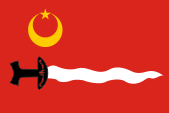
Flag of the Moro National Liberation Front
ratio = 2:3,
Source: Flags of the World




Flag of the Abu Sayyaf
ratio = 2:3,
Source: Wikipedia (DE)
The Islamic Moros of the southern Philippines (especially on Mindanao) fought for independence for half of the 20th century. They claim the islands of Mindanao, Palawan, the Sulu archipelago and the Calamian archipelago for their state. Armed conflicts currently exist almost exclusively on Mindanao. The main underground army, the Moro National Liberation Front, signed a peace treaty in 1996, and an Islamic Autonomous Region was established in 2008. A splinter group, the Islamic Moro Liberation Front, continues to fight alongside other groups, including those like Abu Sayyaf. The word "Moro" comes from Spanish and means "Moor" or "Muslim".
Source: UNPO, 2002


![]()

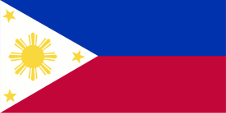


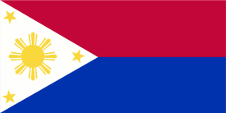
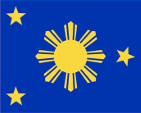
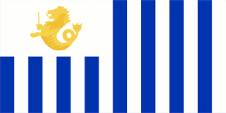
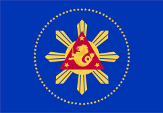
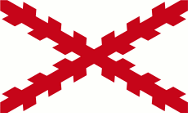

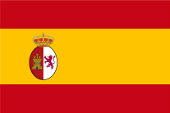
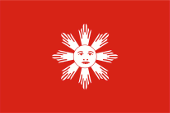
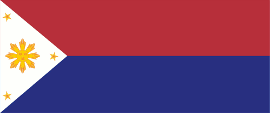
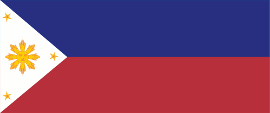
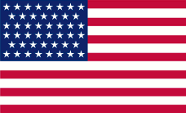
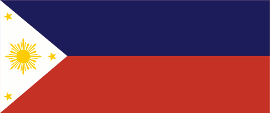
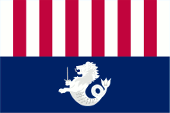
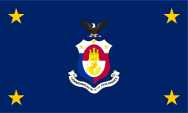
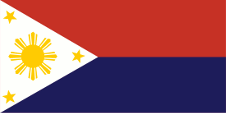
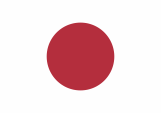

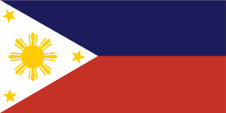
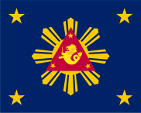
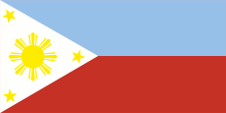
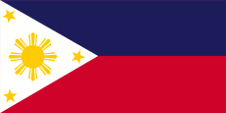












![]()



